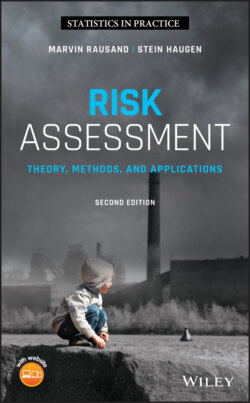Читать книгу Risk Assessment - Marvin Rausand - Страница 54
2.3.6 A Caveat
ОглавлениеThe initiating event, the hazardous event, and the end event are all problematic concerning where to locate them in an accident scenario. The initiating event may be the least problematic, but as seen from the comment after Definition 2.8 , it is not always obvious how and where to start an accident scenario.
The end event and the following end state may be the most important part of an accident scenario and is often used as a name for the scenario, such as “fire in process area 1” or “collision with train on same track.” As illustration, consider a potential fire in the process plant. Should we define the end state of the accident scenario as (i) a fire is ignited, (ii) a significant fire is ongoing, or (iii) the fire has been extinguished? In many risk analyses, the end state is set as soon as a state is initiated that inevitably – if not stopped – will cause harm to some assets. For the scenario above, this means that the end state is defined as “fire is ignited.” When this end state is present, a number of safeguards, or barriers, are usually activated to stop the development of the end state and/or to protect the assets. The consequences of the accident scenario are then determined by the capability and reliability of these barriers. Where to set the end state depends on the study object and on what is deemed by the risk analyst to be practical.
The hazardous event is purely an analytical concept and may be defined by the analyst as any event in an accident scenario between and including – the initiating event and the end event. There are no clear recommendations for the choice of hazardous events, but some choices may lead to an efficient risk analysis and some may not.
For the bow‐tie diagram in Figure 2.2 , observe that if the hazardous event is moved further to the left in the diagram (see Figure 2.3 a), the number of possible paths for the event sequence will typically increase. On the other hand, if we move the hazardous event to the right in the bow‐tie diagram (see Figure 2.3 b), the number of causes of the hazardous event increases and fewer possible paths follow from the hazardous event. The approach in Figure 2.3 a gives a more simple causal analysis and a more complicated consequence analysis, whereas the approach in Figure 2.3 b gives a more complicated causal analysis and a more simple causal analysis. Which of these approaches gives the best and most complete result depends on the system and the problem at hand.
Figure 2.3 Two different choices of hazardous events, (a) early in the event sequence and (b) late in the event sequence.
